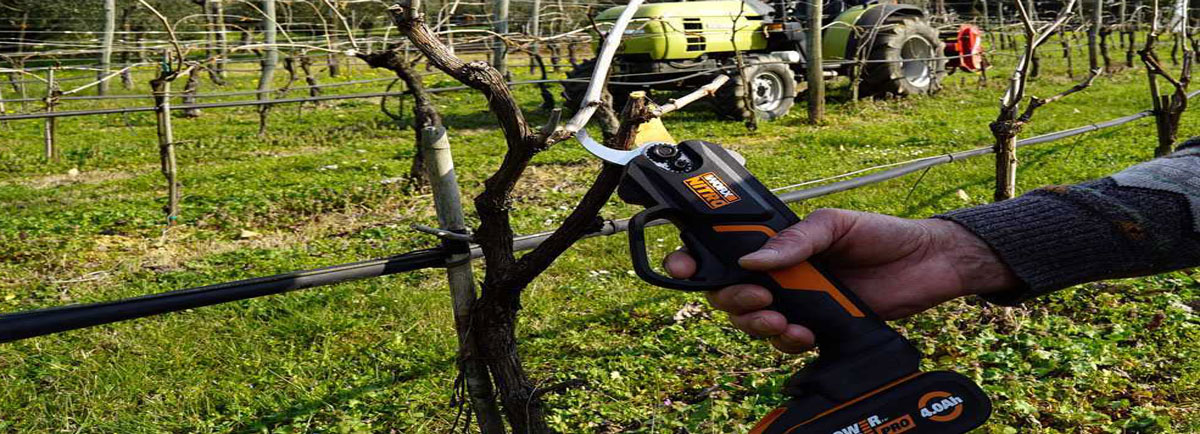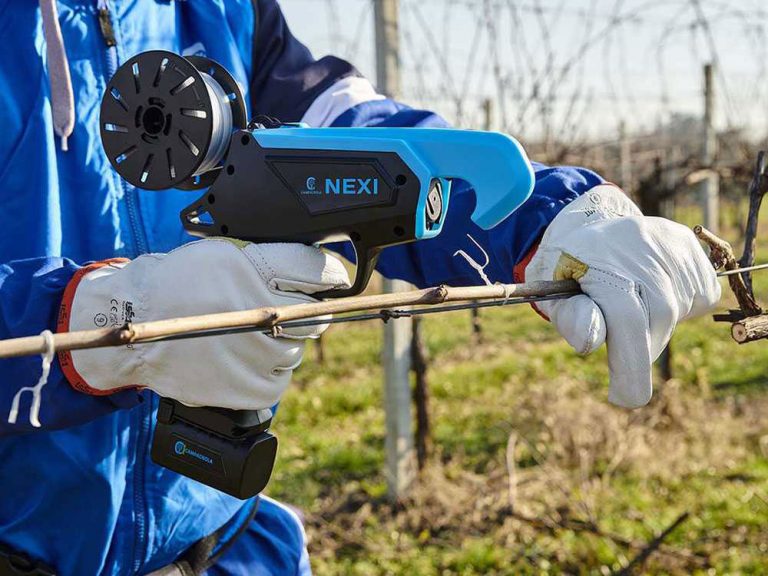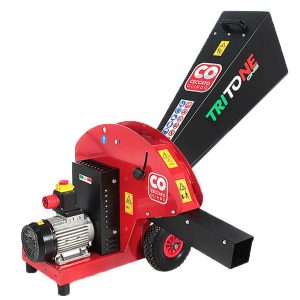A comprehensive guide on plant pruning technique, discovering all the advantages and benefits of its correct and timely use.
The Guide about how to Prune Plants and Trees, useful to discover all the advantages and benefits of a correct and timely pruning procedure.
CONTENTS
1.Introduction
Pruning is a plant cultivation technique, specific of gardening, that consists in removing branches, leaves, flowers or other parts of the plant to monitor its growth, shape, flower and fruit production, or to maintain its health.
It is performed during specific times of the year, depending on the plant type and needs. It requires the use of specific tools such as pruning shears, pruning saws and hedge trimmers. It is very important to use these tools safely and precisely, in order to avoid plant damages or to injure yourself or other people.
Generally speaking, regular pruning is an important operation for plants care and maintenance. Nonetheless, it is crucial to understand the specific needs of your plants and to follow the professionals’ tips in order to obtain the best possible results.
2. Why it is done
The pruning operation is performed for many reasons, and the most important can be summarised in the following points:
- Growth control: Pruning helps to limit the size of the plant and keep it healthy.
- Flower and fruit production boost: It can stimulate the plant to produce more flowers and better quality fruit.
- Plant’s health improvement: It helps to remove dry, diseased or damaged branches that might spread disease or pests to the plant.
- Appearance: It can contribute to enhance the plant with a more well-ordered and attractive form.
- Plant structure development: Pruning also helps developing the correct plant structure, encouraging healthy and strong growth.
3.Which are the advantages?
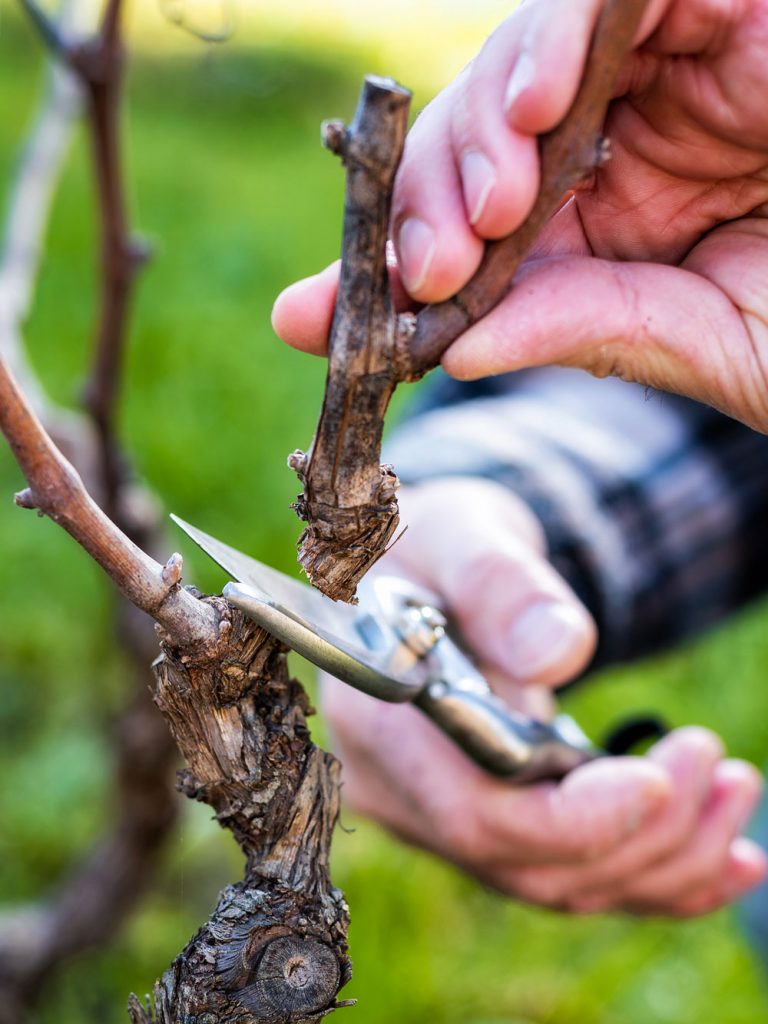
The advantages of this particular process include:
- Healthy growth promotion: It allows dry or damaged branches to be removed, encouraging the growth of new healthy branches.
- Flower and fruit production boost: The pruning stimulates the plant to produce more flowers and better quality fruit.
- Plant’s health improvement: It can prevent the spreading of diseases and pests, keeping the plant healthy.
- Improved appearance: It can contribute to enhance the plant with a more well-ordered and attractive form.
- Simple handling: It makes the plant handling and cure easier.
- Correct structure development: Pruning helps developing the correct plant structure, encouraging healthy and strong growth.
- Space-saving: It helps to monitor the plant size, preventing it from growing excessively for the available space.
Which is the most suitable time period?
The most favourable pruning time depends on the plant type you are dealing with and its growth cycle. Generally, pruning is carried out during spring or early summer, but some plants may require different pruning at specific times of the year, e.g. for flowering plants, it is better to prune immediately after flowering to encourage new flower production.
By contrast, fruit plants require pruning during the off-season to encourage healthier growth and increased fruit production during the following year.
Finally, for what concerns garden plants, winter pruning can help remove dry or damaged branches and prepare the plant for spring growth.
It is important to bear in mind that some plants do not require regular pruning, while others can be over-pruned, causing plant damage. However, it is always advisable to consult a professional or inform yourself about the adequate care for each type of plant before pruning.
| Variety/Month | 1 | 2 | 3 | 4 | 5 | 6 | 7 | 8 | 9 | 10 | 11–12 | |
| Apple tree | ✓ | ✓ | ✓ | |||||||||
| Pear tree | ✓ | ✓ | ✓ | |||||||||
| Cherry-tree | ✓ | ✓ | ||||||||||
| Peach tree | ✓ | ✓ | ✓ | |||||||||
| Grapevine | ✓ | ✓ | ✓ |
5. Which are the main tools used in this field?
In this guide about how pruning plants and trees, we will discuss about the main tools used in this specific field: Electric or pneumatic pruning shears, pruners, pruning saws on extension pole, hedge trimmers and tying machines.
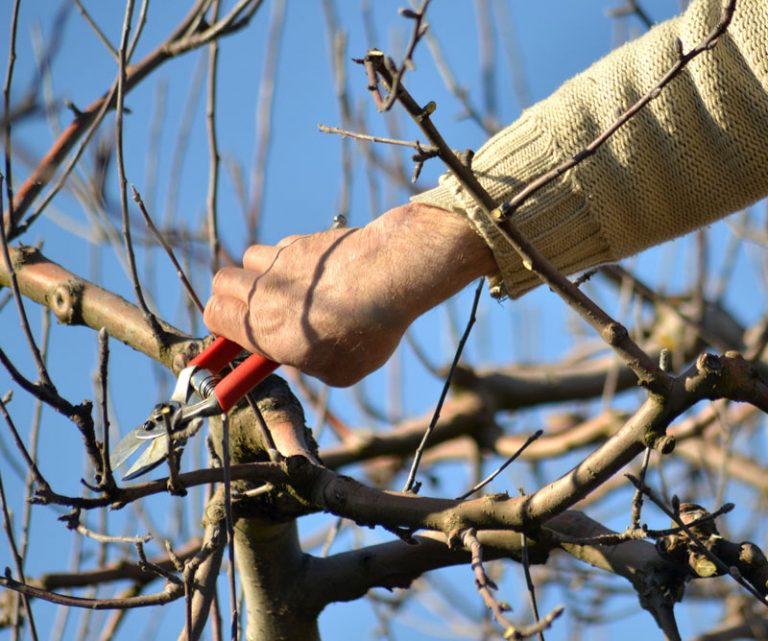
5.1 Pruning shears
The pruning shears are a tool designed to cut branches and leaves of plants and shrubs. There are different types of pruning shears, each one designed to meet specific needs. Generally speaking, when it comes to choose a pair of shears, it is important to take into account the type of plants you want to prune, their height and the size of the branches you plan to cut. As a result, you will be able to select the type that best suits your needs.
5.1.1 Electric pruning shears:
They are an alternative to the traditional pruning shears and they are powered by an electric motor rather than by hand. This type of shears is particularly suitable for pruning larger and heavier plants, as the electric motor makes it easy to cut branches.
5.1.2 Pneumatic pruning shears:
This type of shears are powered by compressed air, usually by an air compressor. They are designed for pruning thicker and heavier branches and, if compared to manual or electric pruning shears, they are extremely powerful and quick. Since they are very efficient and can cut even large branches quickly and accurately, they are often used by professional gardeners and landscaping companies. However, it should be kept in mind that pneumatic pruning shears need an air compressor to operate; in addition, compressed air can generate a lot of noise and can be more expensive in terms of energy than other power sources.
In conclusion, pneumatic pruning shears are an ideal option for pruning large plants, but may not be suitable for domestic use or for small spaces.
Find out more in our specific guides about electric and pneumatic pruning shears.
5.2 Pruners
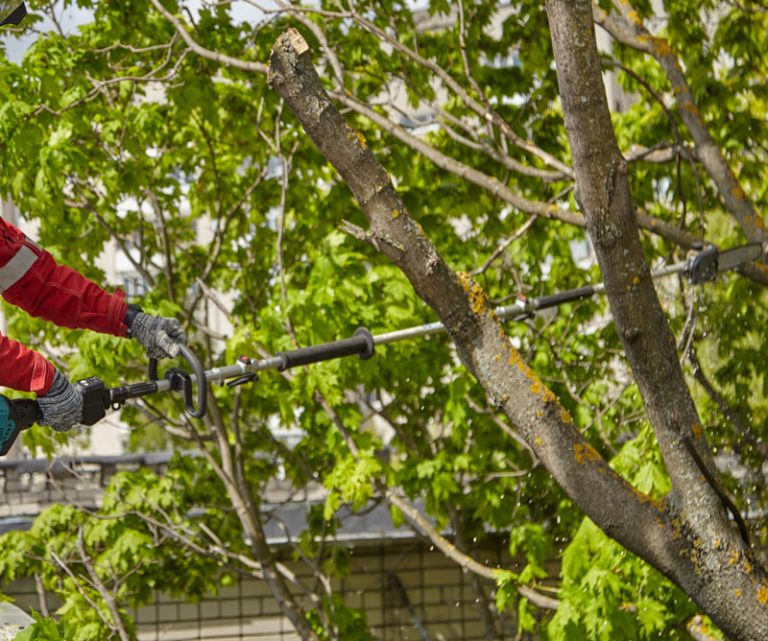
These tools are used to prune plants. They are made up a long extension pole with a sharp blade at the end, used to cut plant branches placed at heights that are difficult to reach with traditional pruning shears.
There are different types of pruners available on the market, each one designed to meet specific needs. For example, there are long-handle shears that allow you to reach high branches, pruners on telescopic pole that can be adjusted to reach different heights, and electric pruners that make it easier to cut thicker and heavier branches.
These tools are an excellent choice for pruning large plants and removing dry or diseased branches.
However, it is very important to use these tools safely and precisely, in order to avoid plant damages or to injure yourself or other people.
5.3 Pruning saws
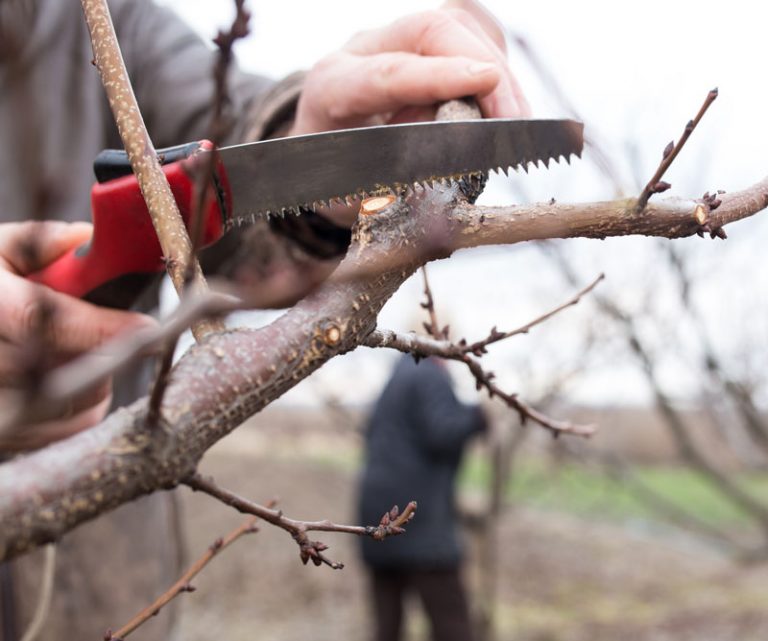
These tools entail a serrated crescent-shaped blade used to cut plant branches. They are designed to cut medium-sized branches and often they are used together with pruning shears suitable for small-medium sized plants.
There are manual and electric pruning saws. Manual pruning saws require the operator’s strength to perform the cut, while the electric pruning saws are powered by a battery or electrical socket and are more powerful and quick if compared to the manual ones.
Generally speaking, they are a perfect option for medium-sized plant pruning but they may not be suitable for the thicker branches or professional use. It is important to choose a high-quality pruning saw provided with a sharpened blade and an ergonomic handle to guarantee a precise pruning.
5.4 Hedge trimmer
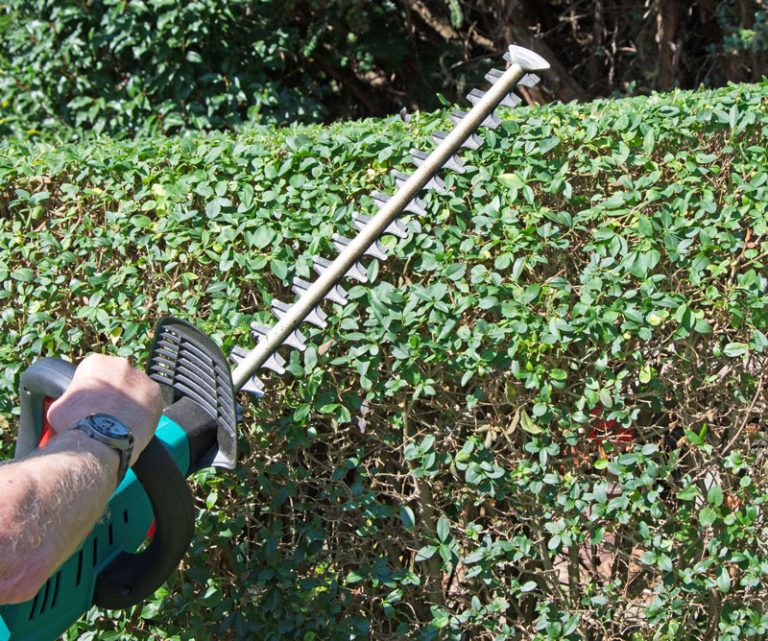
The hedge trimmers are used to prune and for hedge care. We are talking about a machine designed to cut branches and hedge vegetation placed at heights that are difficult to reach with traditional pruning shears.
There exist different type of hedge trimmers available on the market, including battery-powered and electric hedge trimmers.
These are a perfect option for pruning medium or large sized hedges.
| IMPORTANT: The use of hedge trimmers is only recommended for cutting vegetation, such as hedges and flower beds, while pruning shears should be used for thicker branches. |
If you want to find out more and learn more about hedge trimmers, here is our tailor-made guide.
5.5 Tying machines
The tying machines are used to tie plants branches together and provide support during their growth. They are particularly useful for plants with unstable structure or require a support to grow straight.
What are tying machines? These machines are equipped with a mechanism that tightens the tie around the branch automatically.
Generally speaking, tying machines are a good option for supporting and protecting plants, but it is important to use them carefully to avoid plant damage.
It is important to choose a good quality tying machine with a reliable mechanism and sturdy construction to ensure safe and long-lasting tying.
| Find out which is the tool that most suits your needs can be difficult, so here is a list of the leading brands in the industry, available on our site, for guaranteed performance and results:Campagnola, Makita, Einhell, GeoTech, Blackstone, BlueBird e Worx. |
6. Various pruning techniques
There are different types of pruning techniques, each of which is used for specific purposes and goals. Here are some of the most common ones:
- Formative pruning: A technique used to shape and structure young trees and shrubs.
- Maintenance pruning: It is used to maintain the shape and structure of a tree or shrub by removing dry, diseased or damaged branches.
- Renewal pruning: To renew an old or diseased tree or shrub by removing older branches to foster the growth of new, stronger branches.
- Fructification pruning: Ideal for enhancing fruit or berry production on fruit trees.
- Thinning pruning: Often used to improve air circulation and light within the tree’s crown, preventing disease and overgrowth of several branches.
How to dispose of all waste once pruning is finished?
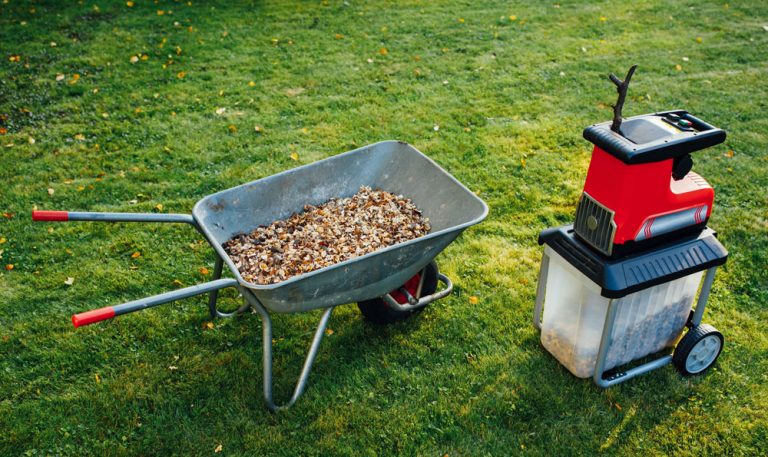
Easy, this is one of the main purposes of garden shredders or “chippers”, machines designed for quick and easy disposal of waste from pruning or other gardening operations.
A machine that, within a very short time, has become an indispensable tool for the disposal of branches, brushwood and, indeed, pruning residues, as it avoids inconvenient transport to landfill sites.
Find out more about Garden Shredders in our easy-to-use guide.
7. Diagonal pruning cuts
Typically, plants pruning is made performing diagonal cuts in order to avoid water stagnation on the pruned portion of the branch.
The diagonal cut is carried out obliquely on a branch or trunk at an angle of 45 degrees from the line of growth. This type of cutting also encourages faster healing and prevents the development of open wounds on the plant, which may attract insects and diseases.
It is important to use sharp, disinfected tools to avoid damaging the plant and spreading any diseases. Furthermore, it is important to cut the plant correctly, paying attention to not removing too much vegetation all at once and to not cutting too close to the trunk or main branch.
8. Conclusion
In conclusion, pruning is an important task in the care and maintenance of plants, as it helps to improve the shape, health and growth of the plant, prevents the spread of diseases and pests, and maintains a tidy and pleasant aspect of the garden.
As mentioned above, pruning requires an adequate understanding of the needs and characteristics of the plant but also choosing the most suitable technique and using the right tools. For this reason, we decided to write this detailed guide about plant and tree pruning, in order to help even the most inexperienced operator to perform this procedure correctly.



